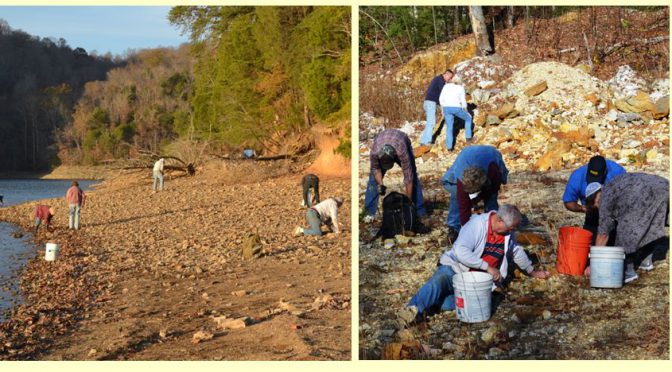Last month I wrote about the Arkansas portion of Wayne County Gem and Mineral Club’s November field trip south (quartz, quartz and more quartz). But we did not stop there. After three days of collecting SiO2 in and around Mt. Ida, Arkansas, ten of us pointed our large black van east and headed to Tennessee and North Carolina. There was still a bit of space to fill in the van and in the trailer and we simply could not head north without filling all possible nooks and crannies. Here is how we did it!
The first stop was on Dale Hollow Lake in Tennessee and the objective was silicified crinoids. We had left our cozy home away from home in Mt. Ida, Arkansas at 5:30 AM, and arrived at the lake with about two hours of collecting daylight. Did we ever claim this was easy? Despite the long shadows we took advantage of the fall’s low lake levels and claimed our crinoids. Eva Jane (left side of photo) decided not to let the lake level restrict her collecting area. I’m pretty sure there are several species represented: some are highlighted with thin raised aboral spines along the stems, some with thicker and more widely spaced spines, and others with smooth sides. Perhaps I’ll find a time this winter to try to sort and identify mine (see the box inset into the picture below).
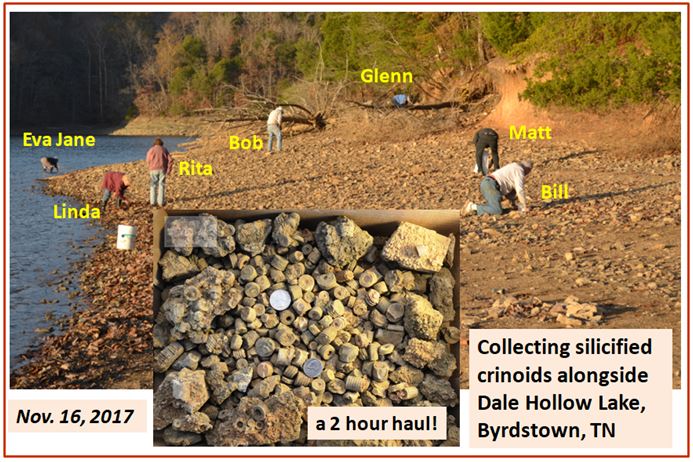
It did get dark (it does that early in November) and we retreated for dinner, but were not done collecting for the day. There was coral in the outcrop behind the parking lot of the restaurant. It was the same Mississippian section exposed along the lake (Haynes, 2013), but here we found the fossilized remains of a large colonial coral mound. Small and large pieces exposed right alongside the parking lot. Flashlights (and car headlights) were deployed: it was fossil coral for dessert!
Friday morning we headed southeast into the Blue Ridge Mountain region of extreme western North Carolina. We were met by Harry Polly, local collector from Hickory N.C, who led us to two of his favorite collecting sites in the region. First he took us to a small outcrop near Burnsville where bright blue kyanite was embedded within schist. It was hard, but teamwork permitted some to be extracted. It may not compete with Brazilian kyanite in color and luster, but we each went home with a few self-collected pieces. I know I value my personally collected specimens above anything I acquire by purchase or trade.
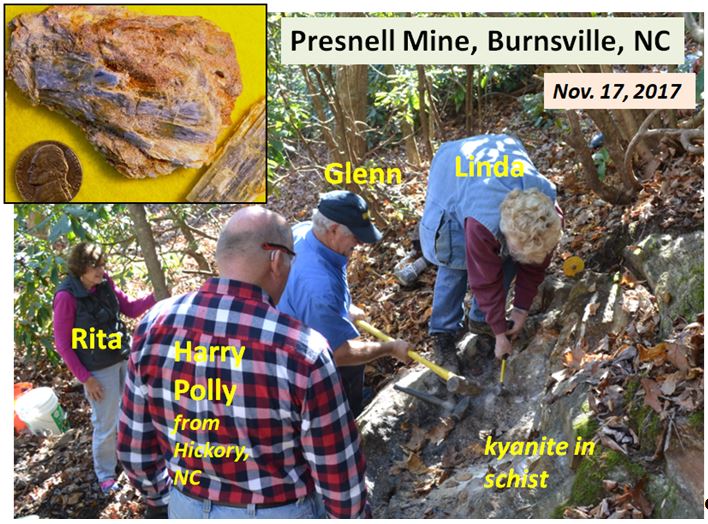
After a couple of hours there, we followed Harry over hill and dale along winding roads past small farms to an old pegmatite mine site. The Sinkhole Mine, was first worked by Native Americans for the ornamental value of its ruby-colored muscovite. Later, feldspar would be recovered from the site. However, our primary finds were bright green apatite and red garnet. The two were often intergrown and it seems somewhat appropriate that I am writing about them during Christmas. The large piece shown on the next page was Bob’s find of the day; I wish my camera had captured the vibrant colors better. Oh, we took some muscovite and typical pegmatitic graphic granite home also.
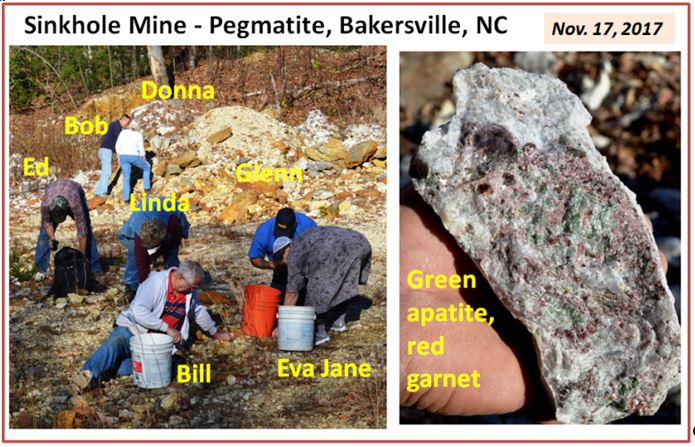
On our final day, we elected to visit the Little Pine Garnet Mine in Marshall, NC. You can saddle up and ride horseback to the site, but we elected to pay our collecting fee and drive there. The site is unique site in that it is possible to collect underground, hacking away to extract golf ball sized garnets from the adit walls. The garnets are hosted by a chlorite phyllite/schist. The schist is hard, but not as hard as the garnets which can be extracted with hand tools. Glenn recovered the garnet in the lower right of the picture below from inside the mine.
The rest of us spent most of our time hunting in the dumps and the streambed outside and below the portal. It was easier work and it was a glorious fall day. The garnets are almandine in composition, and they are virtually all modestly elongated rhombic dodecahedrons. Unlike the more common 12-sided regular dodecahedrons which have pentagonal faces, these garnets have four-sided rhombuses as faces. Their surfaces are rusted and somewhat etched, but we all recovered a few dozen nice-sized garnets loose in the dumps and stream bed.
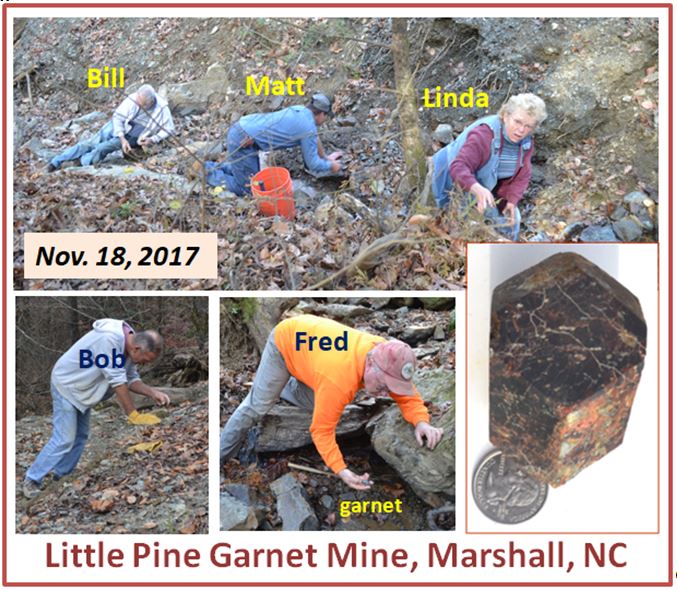
Unfortunately, all good things must come to an end, and our adventure was no exception. Sunday morning November 19th, we left the southeast in our shirt sleeves. By late that evening we were unpacking the van and separating our personal finds in a snowstorm in Wayne County. It appeared to all of us that the 2017 collecting season was officially over. And we were correct. It is now time to start planning anew. 2018 is fast approaching.

References:Haynes, F., 2013, Collecting in Tennessee, – link – http://fredmhaynes.com/2013/12/15/collecting-in-tennessee/#more-191
